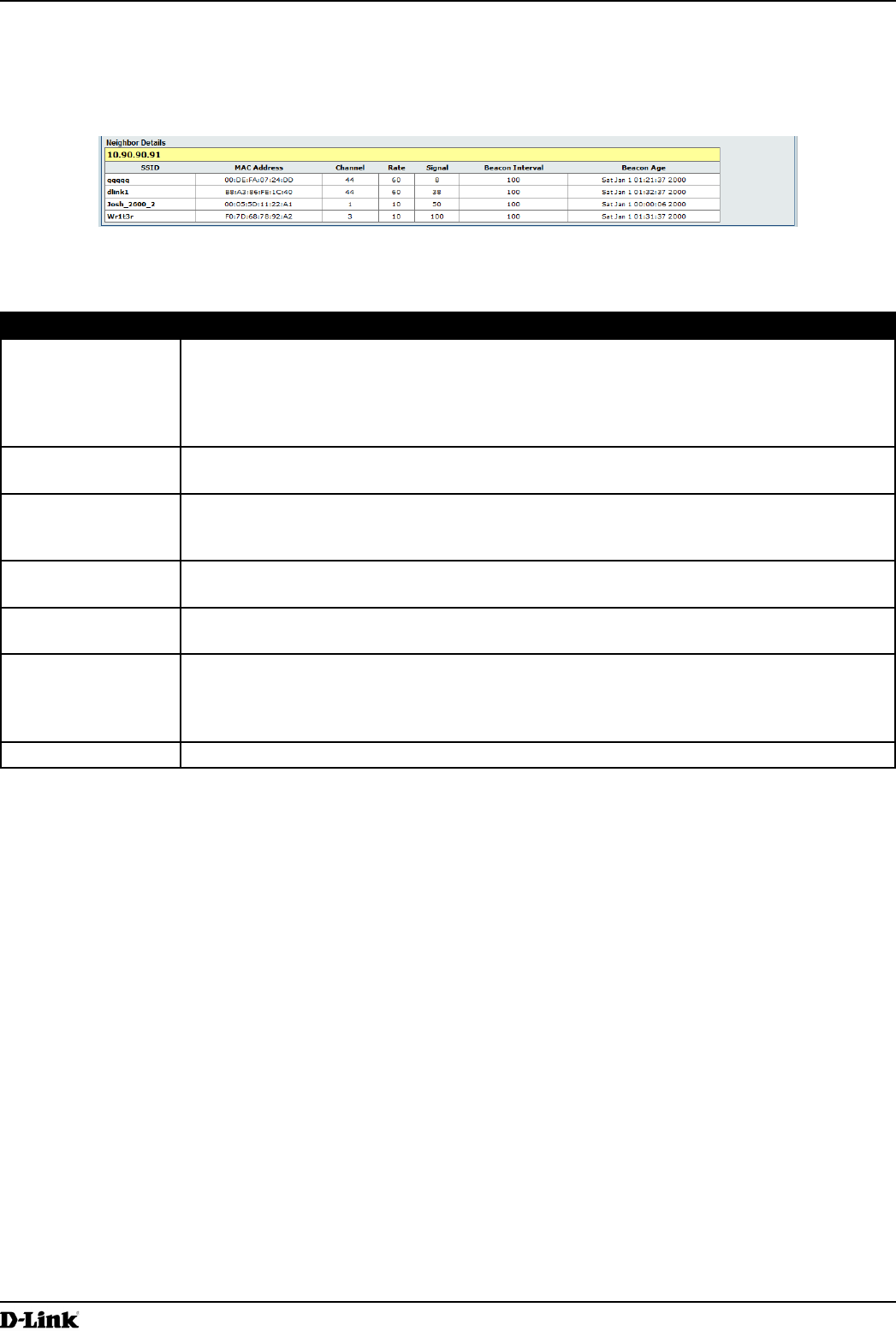
Unied Access Point Administrator’s Guide
Unied Access Point Administrator’s Guide
Page 112
March 2012
Section 9 - Clustering Multiple APs
Viewing Details for a Cluster Member
To view details on a cluster member AP, click on the IP address of a cluster member at the top of the page. The
following gure shows the Neighbor Details of the AP with an IP address of 10.90.90.91.
Figure 68 - Viewing Details For A Cluster Member
The following table explains the details shown about the selected AP.
Field Description
SSID The Service Set Identier (SSID) for the access point.
The SSID is an alphanumeric string of up to 32 characters that uniquely identies a wireless
local area network. It is also referred to as the Network Name.
A Guest network and an Internal network running on the same access point must always
have two different network names.
MAC Address Shows the MAC address of the neighboring access point.
A MAC address is a hardware address that uniquely identies each node of a network.
Channel Shows the channel on which the access point is currently broadcasting.
The Channel denes the portion of the radio spectrum that the radio uses for transmitting
and receiving.
Rate Shows the rate (in megabits per second) at which this access point is currently transmitting.
The current rate will always be one of the rates shown in Supported Rates.
Signal Indicates the strength of the radio signal emitting from this access point as measured in
decibels (Db).
Beacon Interval Shows the Beacon interval being used by this access point.
Beacon frames are transmitted by an access point at regular intervals to announce the
existence of the wireless network. The default behavior is to send a beacon frame once
every 100 milliseconds (or 10 per second).
Beacon Age Shows the date and time of the last beacon received from this access point.
Table 65 - Cluster Member Details


















